My first boat was an inflatable yellow rubber boat with red pointed ends, which earned it the nickname: "Sexy Boat"
It was driven by an outboard motor and served as a diving and snorkeling platform
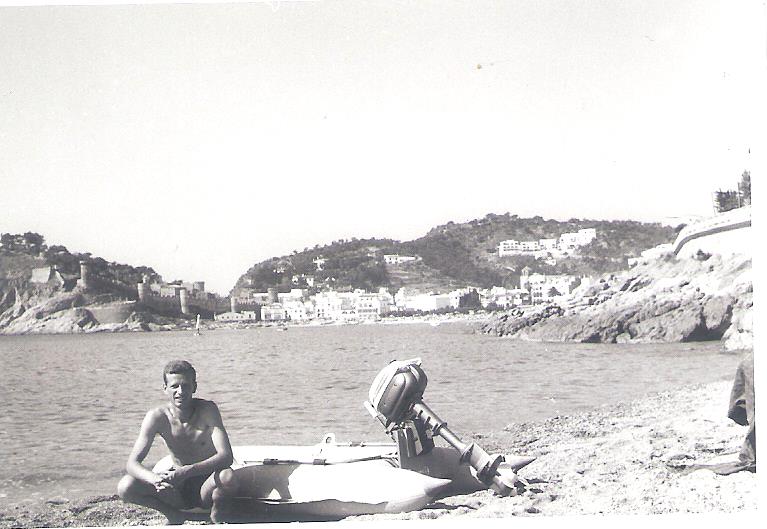
1964 "No name - Sexy Boat" at the beach in Tossa de Mar, Spain
The next boat was a sailboat, the catamaran "Ipanema I"
| I always loved sailboats. As a child I built sailboats from corks with a match as mast, a razor blade as centerboard and a paper sail and made them sail in the seven seas formed after rainfalls on the square adjacent to our house. With the time the boat shapes and the sails became rather sophisticated with jibs, genoas and various forms of main sails.
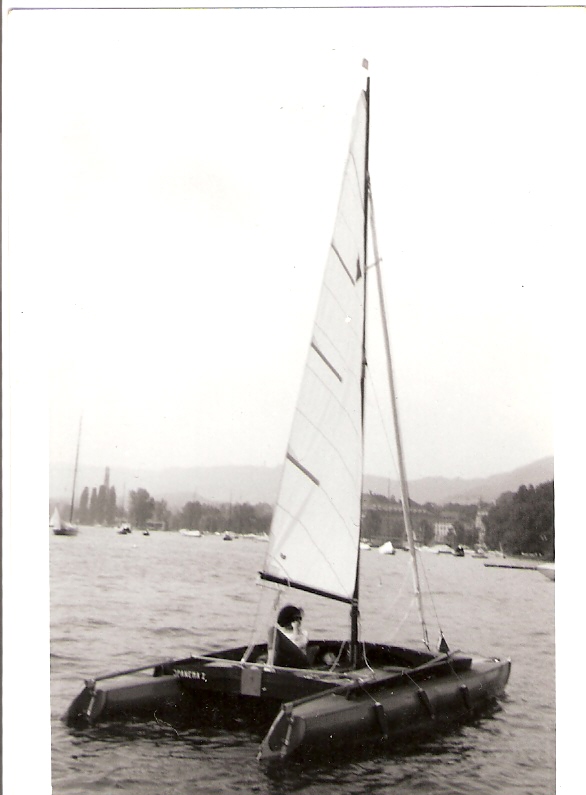
1964 Catamaran "Ipanema I" on the Zurich lake
Together with the catamaran I had a little Enterprise Dinghy with the famous blue sails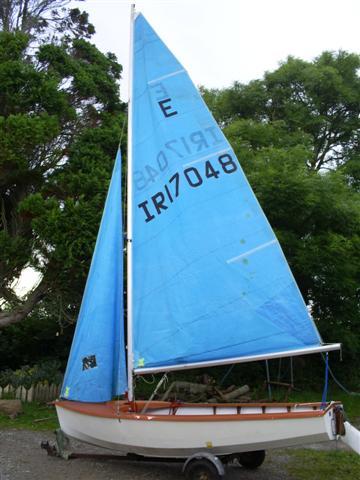
1964 Zurich Lake,The Enterprise Dinghy
(photo taken from the internet)
After my emigration to Brazil I entered directly into the famous Iate Clube do Rio de Janeiro with sailing intentions. There I found a very active class called "Carioca", a brazilian adaptation of the german 15 m2 Jollenkreuzer with a fully battened main and a wooden forestay with a groove for the jib. I bought one and called it "Cirrus", race number K - I - 26.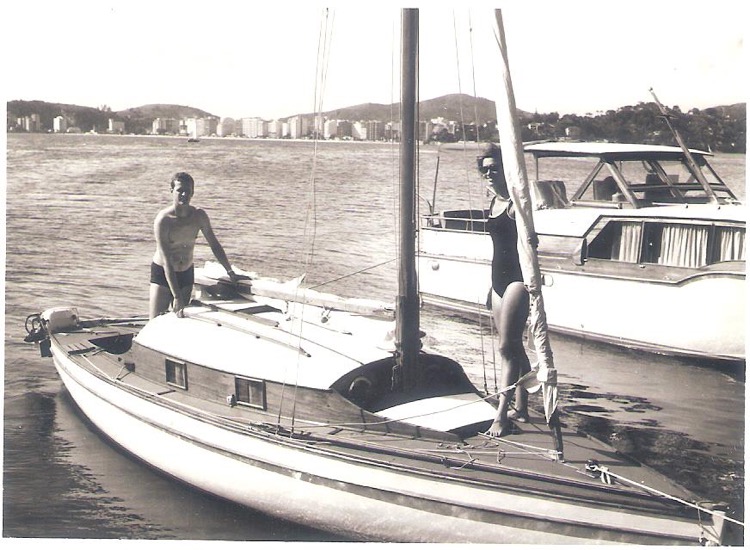
1968 Cirrus at the "Saco de Sao Francisco"
Cirrus participated in many races and cruising soon became second place in importance.
The crew were three and practically each weekend were races, so many, that after half a year of patience my wife threatened me with a divorce and succeeded in a reduction of my race fanatism.
The most famous cup race was the "Taça Jornal do Brasil". It was a honour and a must to participate in this race.
My crew was composed of Helinho, nickname"Mingau" (=porridge) and Arnaldo, nickname "Soneca" (=sleepy) and in spite of these names we placed very well in the races.
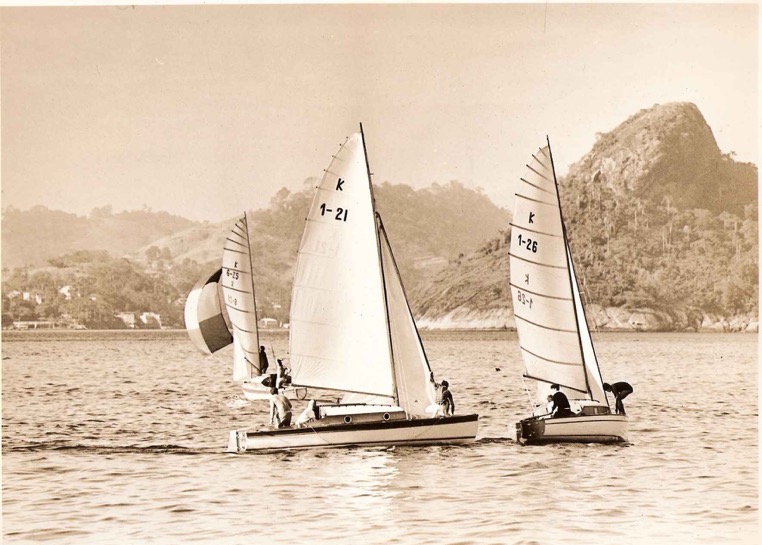
Taça Jornal do Brasil, K-I-26 "Cirrus" preparing to hoist the spinnaker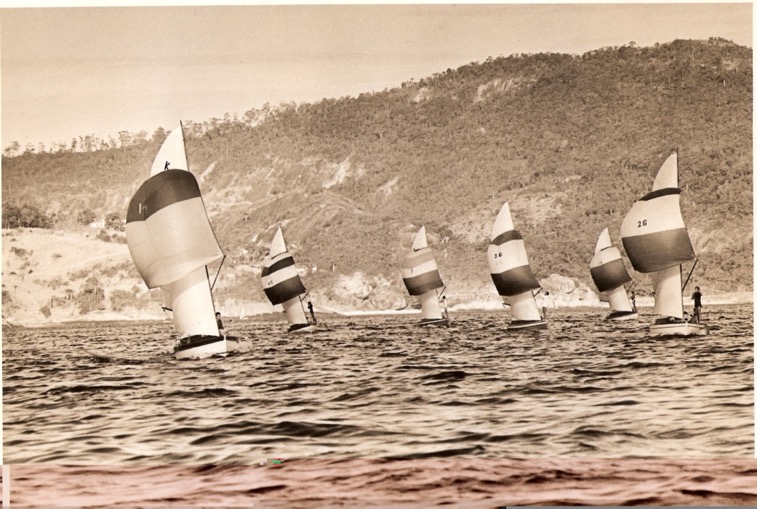
Taca Jornal do Brasil, Cirrus K- I -26 at the extreme right
After a while I became eager to participate in offshore races and purchased in Holland an ocean racer class RORC IV baptized again "Cirrus". It was the dutch champion in RORC class IV of that year. Do not think that I was a millionaire, I was a simple employee and had to contract a long term financing with a bank to buy this boat.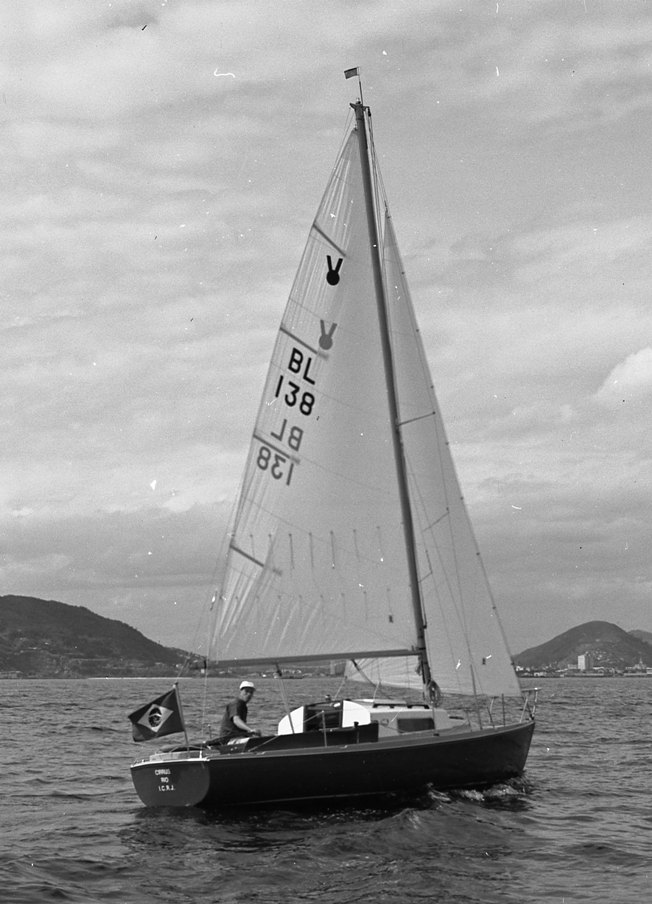
Cirrus was extremely fast in light winds, it had an increased mast in relation to the dutch model, an adaptation to the predominantly light winds in Rio.There came another race period and Cirrus winning a lot of races with its advantageous handicap against the big boats. I forgot to say, the hull was fire engine red, it could not be overlooked.
I was so fond of the dutch boatyard called "Victoria" that I ordered a somewhat bigger boat (once you have the first, the boats always increase in size), another ocean racer called this time "Seawolf" inspired by the Jack London novel and my own name. Seawolf was very beautiful with a teak cockpit and a very well equipped interior, but I forgot to increase the mast hight and therefore it did not repeat the success of Cirrus in the races. Anyway, it was the smallest boat ever participating in the famous Santos - Rio race (aprox 300 sm)
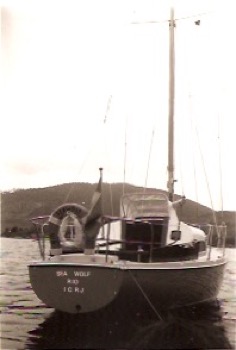
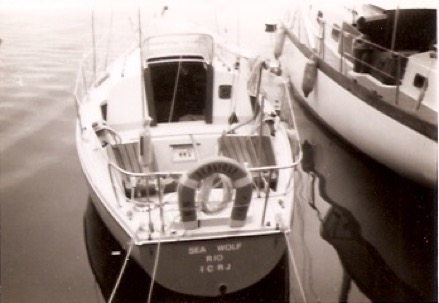
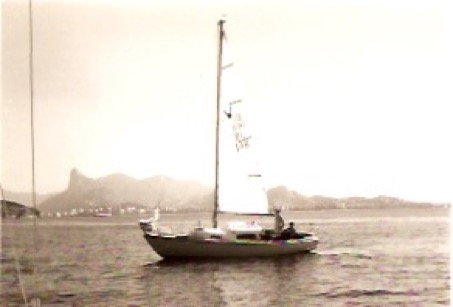
There came a time when a patriotic military government took over after a disastrous attempt to transform Brazil into a communist "Peoples Republic". The new republic had no devisa and incentivated much the foundation of a national industry. An all new brazilian boat industry arouse and I was the first to try out a fully national product. The boat was called "Seehund" (brazilian spelling Zeee-aaa-undiii) and it was a disaster, even for cruising. Soon after launching, still on the mooring, the rivets of the boom sheet fixture came off, but thanks god nobody got hurt. The motor was a Yanmar fishing vessel motor giving terrible kick-backs on the crank and one day, operated by my sailor when I was in Europe on business, it sucked sea water on the kick-back and the the sailor left it simply there. The piston rusted into the sleeve and had to be loosened in a motor workshop by hammer. I sold the boat.
I still had no chance to import another racer and so I choose a meantime famous class boat Brasilia 32, named "ZOO" which gave me a lot of fun in races, class level and handicap in IOR, but also in many cruises to Angra dos Reis, where the ICRJ maintains a subsidiary station. The name "ZOO" was given by my little son when he saw the crew on board, meaning they were a lot of strange animals. The name stayed for all of my further boats.
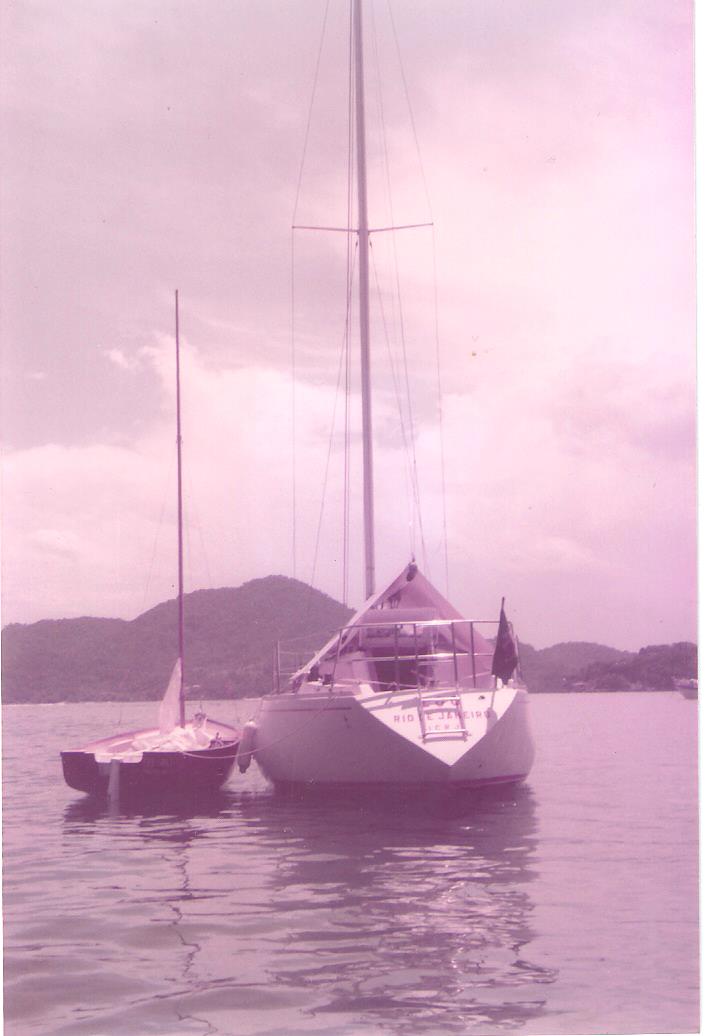
ZOO in Angra dos Reis with the auxiliary Dinghy "Seewolf"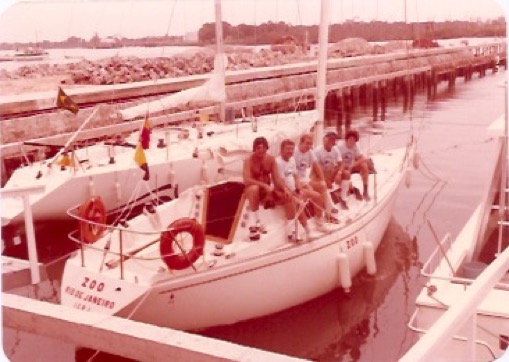
1979, ZOO in the Santos - Rio race, crew f.l.to r. Carlão, Klaus Stockmann, Peter Zeplin, Aloisio Hosannah, Eugenio Marins (and me)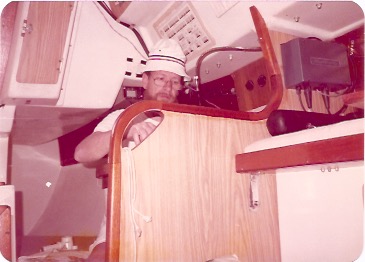
Santos - Rio race, navigating
A friend of mine called Jaques Mille, had a marine shop in the city, exposing a little Dinghy of the Sunfish class. I just loved this boat for its versatility and bought it. It was also called "ZOO".
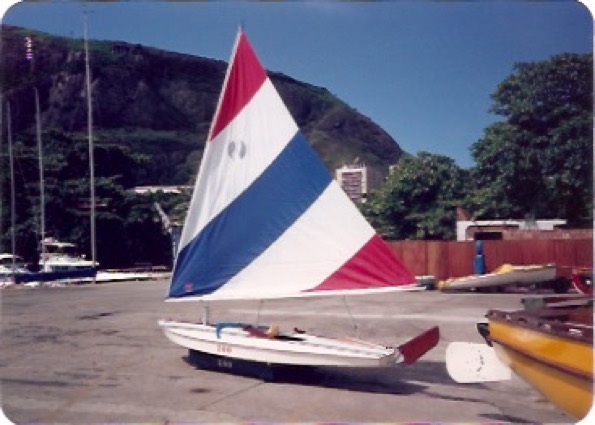
1987 Sunfish ZOO at the ICRJ
I always helped my friends when their economical situation was not so good. My french friend Henri Ballot had established in Angra dos Reis, more specifically on the Ilha Grande, Saco do Ceu, a little boat yard and I bought from him a 15 foot speed boat with a 35 HP Evinrude outboard motor, called D.U.A. When my friends asked me about the name I always answered, these are the names of my ex-girl friends: Doris, Ursula and Andrea. A big lie!
If you want to know the truth, just drop me an email.
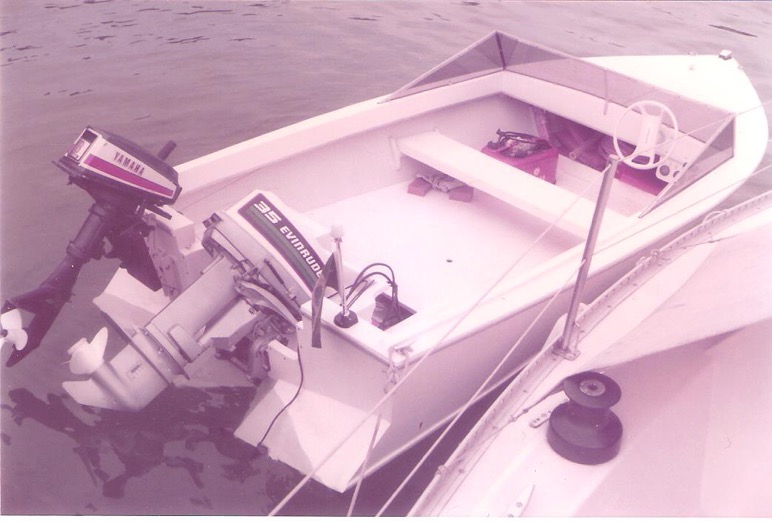
D.U.A. anlongside ZOO
One day I saw on the site of the Mesbla warehouse at the Barra da Tijuca a half abandoned Daysailer (design Uffa Fox) in blue colour. It was manufactured under US license by the yard Mariner in the south and I could buy it at a good price, because Mesbla was giving up the boat sales. There was no constituted class in Rio so I had a wonderful cruising season with this stable and comfortable boat.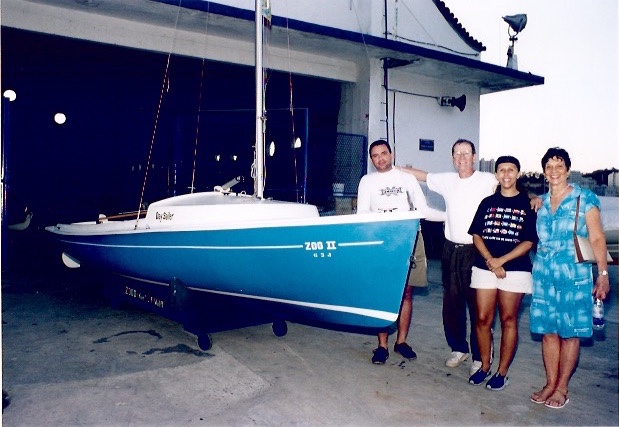
I sold the ZOO II to Alexandre Barroso, on the photo first from left, then myself, Alexandres wife and my wife Maria Thereza
After all the sea races I got tired of crew troubles and scraping off barnacles from the bottom of my boats, so I bought a little Dinghy of the wide spread brazilian Dingue class and called it ZOO III. As I found another 3-4 (nearly abandoned) Dingues in the ICRJ, I animated the owners and founded the ICRJ Dingue fleet. There came another race period, this time with small boats on class level. My friend Alexandre Barroso, whom I made fleet captain, organized even a national cup event where nearly ninety Dingues participated. Soon the ICRJ fleet grew and I got tired again, this time of olympic round the buoys races. So I invented two cruising races, one starting from Posto 6, near the Copacabana beach and ending between the light houses of the inner harbour entrance of the ICRJ.
Alexandre Barroso named the race "Kurt Juergen-Posto 6" in my honour. Another race, which I invented in the honour of the builder of the Dingues, Lorenzo, starts from the Adam and Eva beach in Niteroi. The crew has to stay near the boat and the helmsman 10m away from the beach line. At the cannon sign the helmsmen runs to the boat, turns the bow seaside und starts, rowing with the hands, pumping the sail, rocking the boat and all other normally forbidden means, till the steady wind is reached und the race rules again established. The race ends again at the inner harbour of the ICRJ. Below you will see in a sequence all my Dingues, from ZOO III to ZOO VI.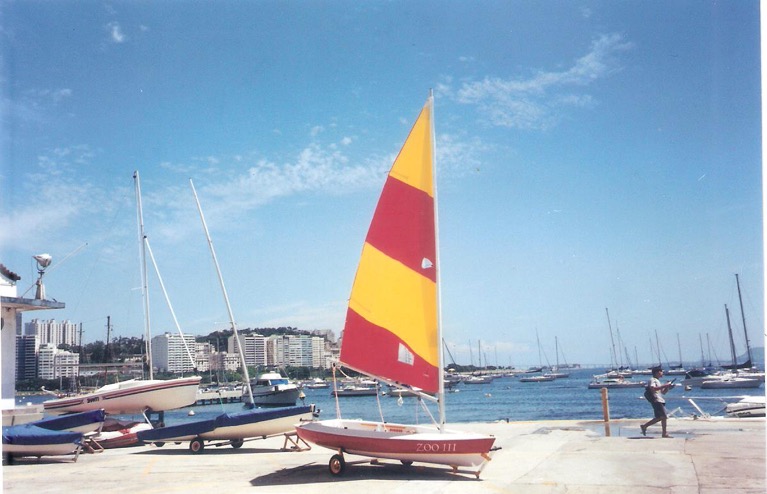
Dingue ZOO III with a cruising sail at hangar 3 - ICRJ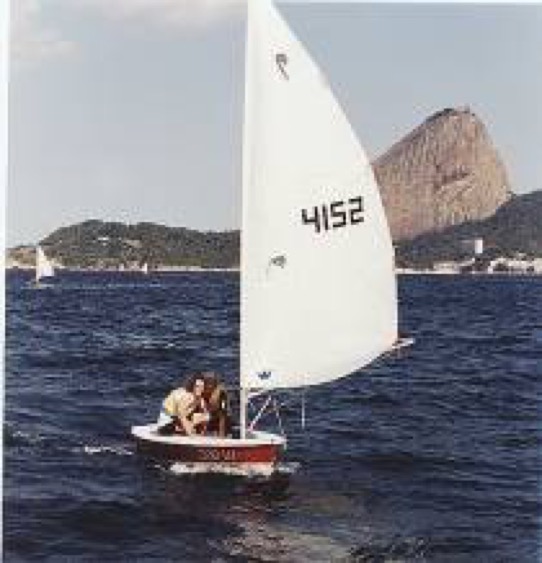
ZOO III racing under the sugar loaf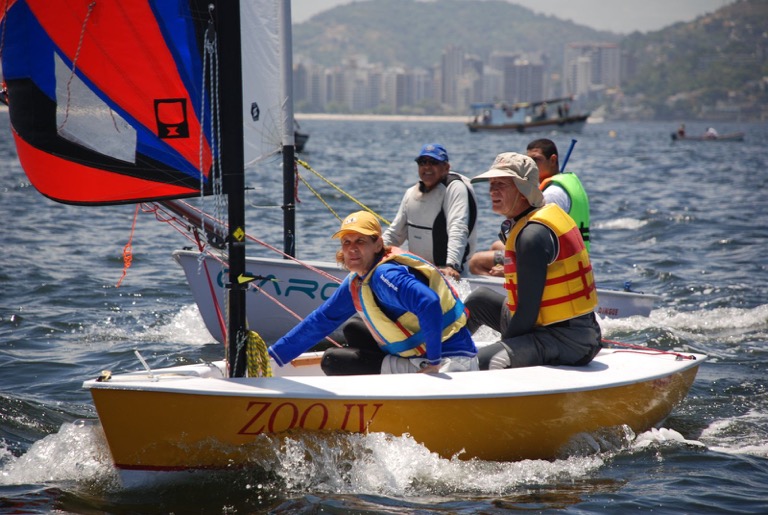
ZOO IV racing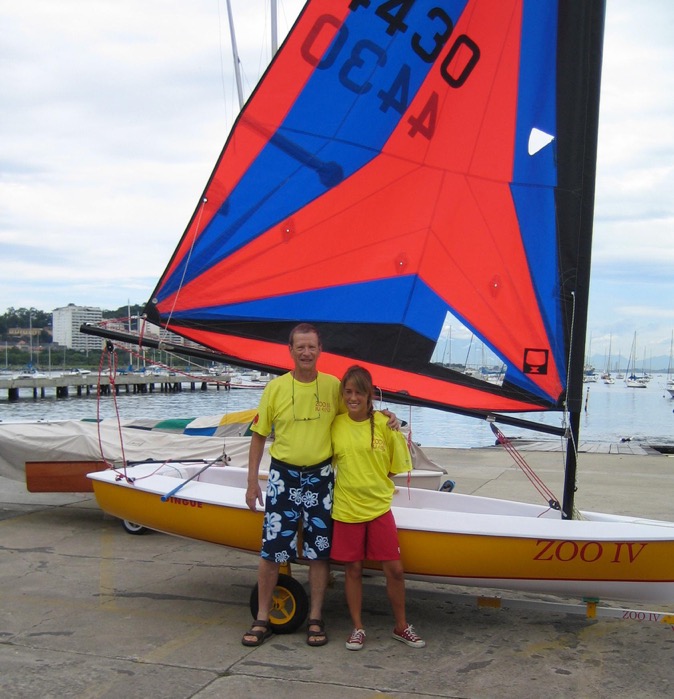
2005 regata Pais e filhos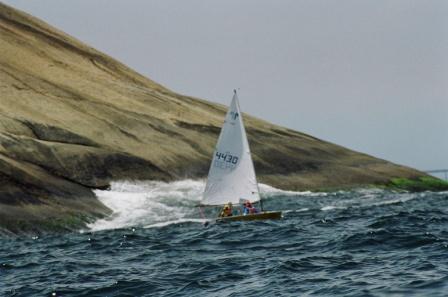
ZOO IV, Kurt Juergen race, a dangerous passage, ambition driven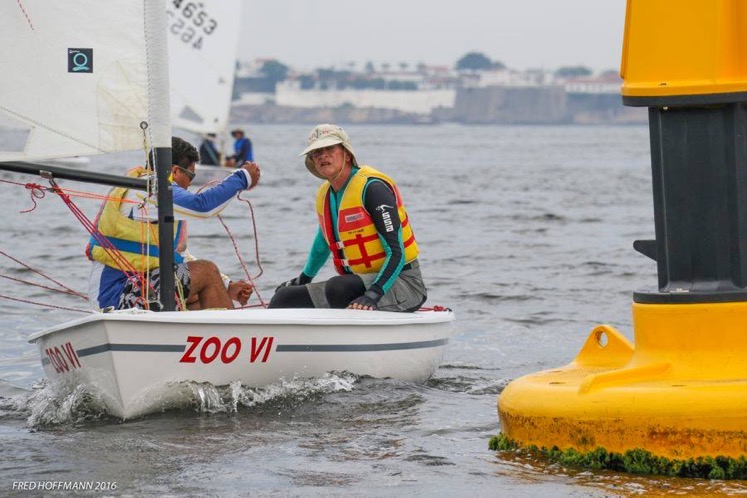
ZOO VI - 4430 rounding a race mark
Regata Lorenzo, Niteroi, ZOO VI second from left
After a lot of Dinghy racing I had an offshore attack and bought a small ocean racer of the rather famous Skipper 21 class., baptized ZOO V (because it was between the dinghies no IV and VI) It underwent a complete measurement under the current offshore rule and participated with success in two races, but I had not learned yet the lesson: lack of good crews. I had already trained so many sailors for offshore sailing becoming tired of that task. The result you can imagine: I sold the little beauty in spite of being a top modern race boat without any vice. As you can see above, after this offshore excursion followed the Dingue ZOO VI which I am sailing till today, two times a year in races, the already mentioned "Kurt Juergen-Posto 6" and the "Regata Lorenzo".
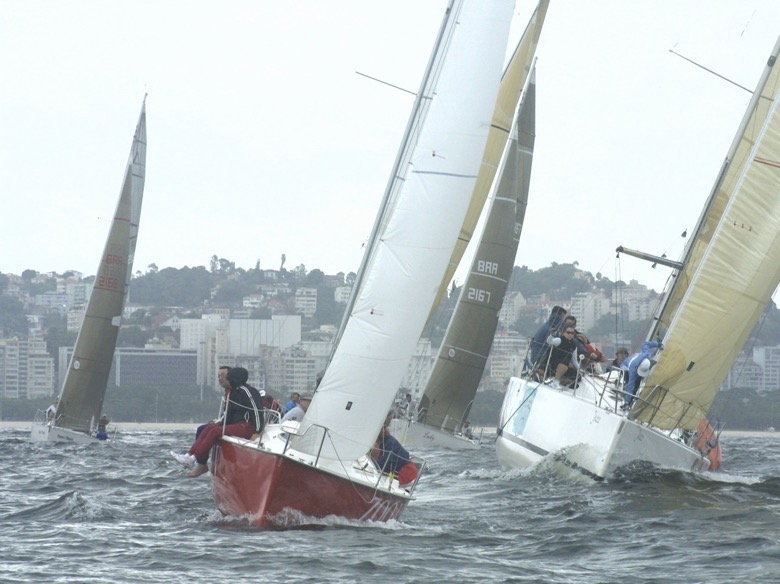
2008 ICRJ "Rei Olav race" ZOO V in the first upwind leg in front of all bigger boats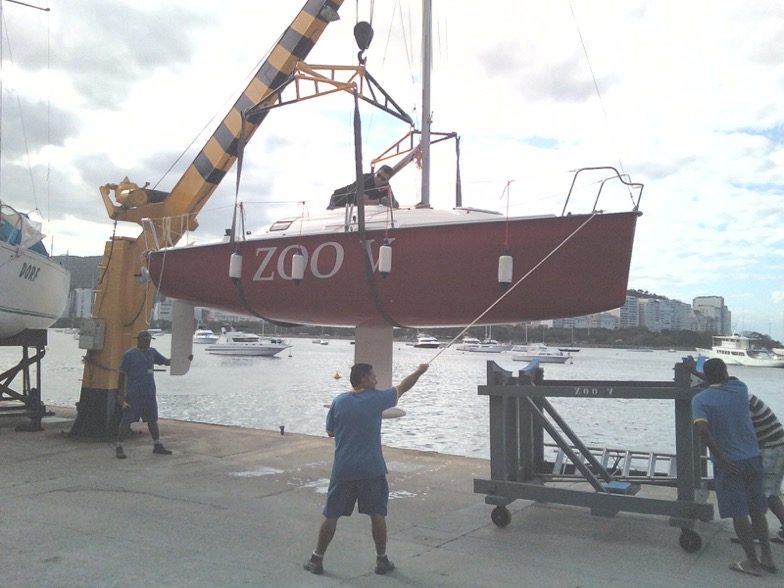
ZOO V on the lift and on the way to the berth
Back to actual times = dingue racing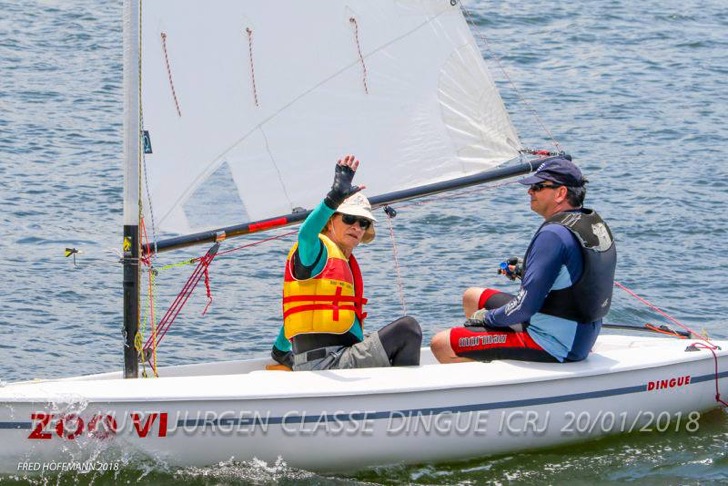
2018 Regata Kurt Juergen - Posto 6
Arriving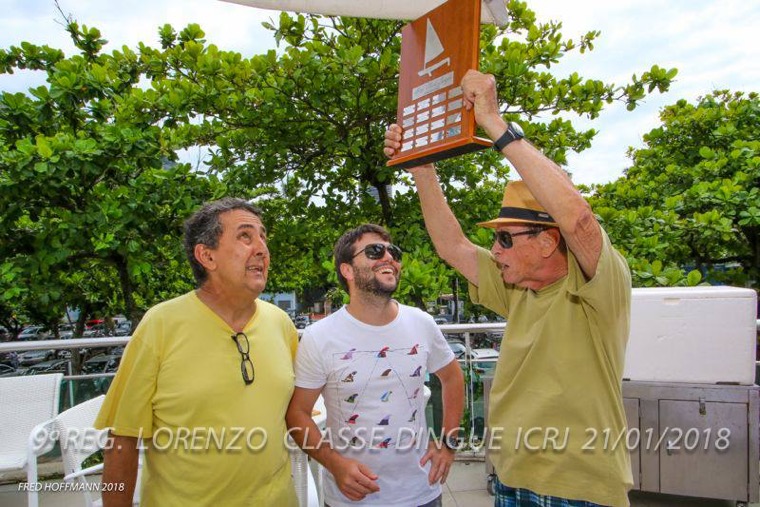
January 21, 2018, the Kurt Jurgen trophy changing the temporary owner.
You see in the centre the lucky 2018 winner Gabriel Dias Pomar, son of the Dingue designer